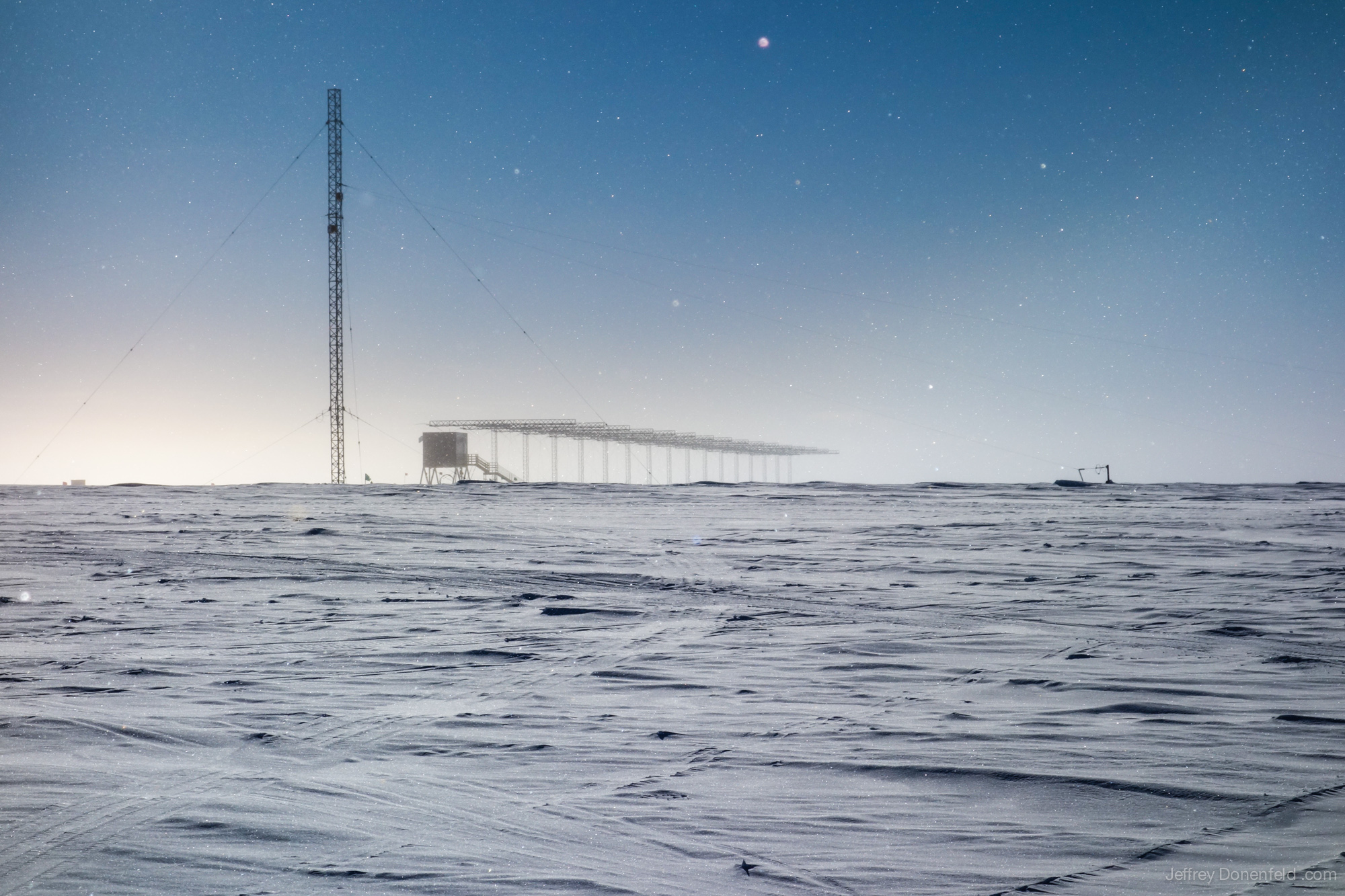A ways away from the South Pole Station, a new antenna field is taking shape – it’s the Super Dual Auroral Radar Network – nicknamed SuperDARN. Run by Principle Investigator Bill Bristow of the Geophysical Institute at The University of Alaska Fairbanks, the SuperDARN antenna array has quickly taken shape since the new year. The installation, located about 1/4 mile away from the station, consists of two rows of antennas about 30 feet off the ground, and a central elevated electronics and workshop.
The completion of the South Pole SuperDARN installation adds it to a global international network of 22 radar installations. The network primarily observes high frequency bands from 8-22 MHz, and is aimed at helping to answer questions about worldwide magnetic storms and the sun’s effects on ionospheric plasma movement.
The full explanation, from the USAP’s science writeup:
The Super Dual Auroral Radar Network (SuperDARN) is a global international radar network of 22 installations observing high frequency (HF) bands between 8 and 22 MHz. Radar systems have been installed at McMurdo (2009-10) and South Pole (2011-12), extending the global-scale coverage in the Southern hemisphere and helping answer questions about geomagnetic conjugacy of global magnetic storms and substorms and differences in the ionospheric plasma convection caused by the asymmetry of solar illumination in both hemispheres. The SuperDARN network, with its ability to observe global-scale convection with excellent temporal and spatial resolution has proven to be the most powerful tool available for the ground-based research, allowing scientists to address the most fundamental and important questions of space physics. These data are also relevant to important societal issues such as space weather studies and they enhance the usefulness of data from other instruments.
A few photos of the installation:
Looking from just outside the South Pole Station at the final form of the radio array

Principle Investigator Bill Bristow, along with fellow scientists

Inside the electronics workshop, antenna cables feed into the main electronics racks

Carpenter Don McCreight installing the stairway to access the workshop
https://flickr.com/photos/jamfan2/8375204644/in/photostream/lightbox/


Comments
3 responses to “The Super Dual Auroral Radar Network Is Built At The South Pole”
Don McCreight! There’s a name I haven’t heard since I left the program in 1997!.
[…] Super Dual Auroral Radar Network (Super-DARN) […]
[…] it.